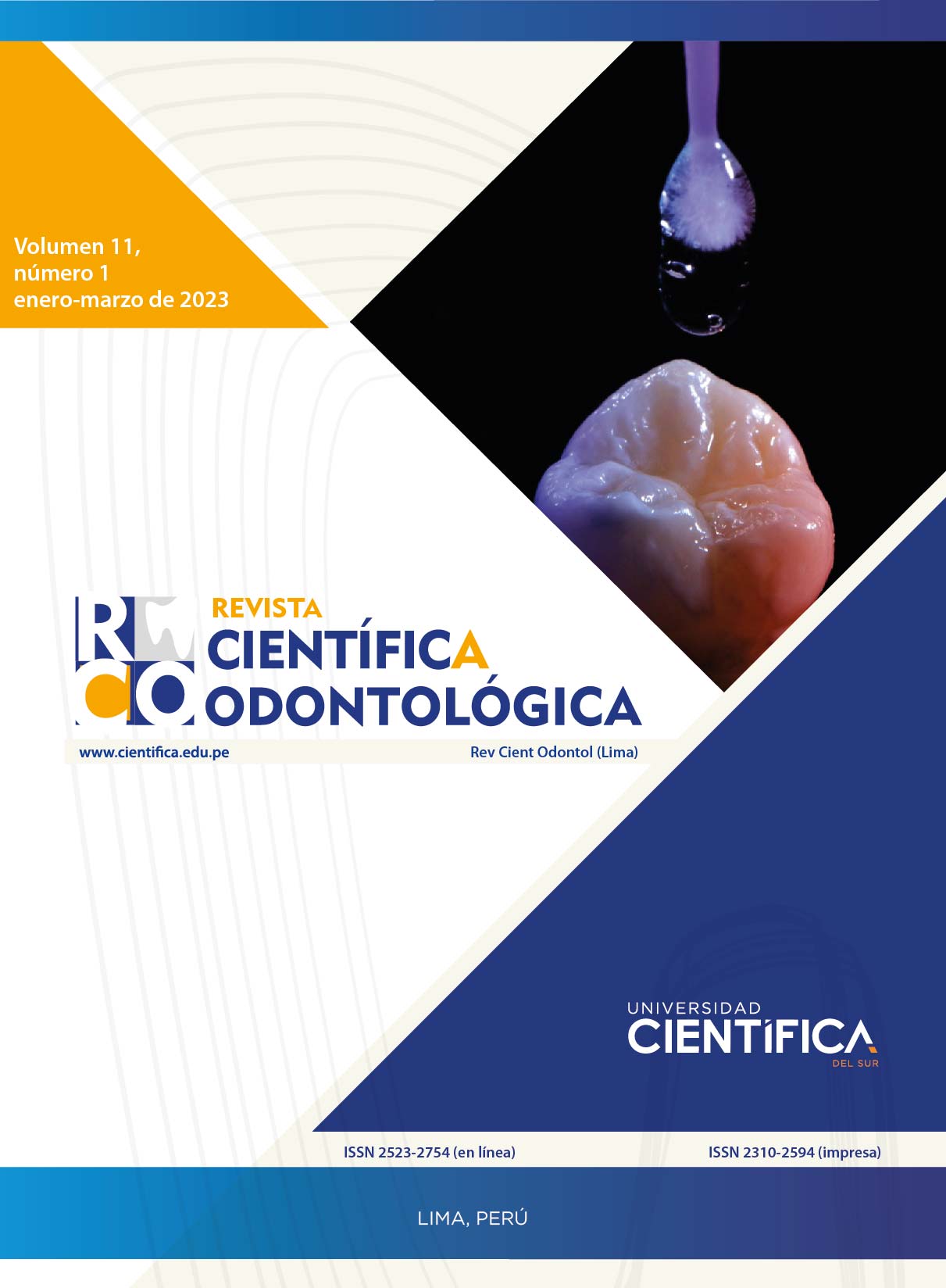Evaluation of the adhesive resistance of a composite resin to dentin treated with chlorhexidine and photodynamic therapy. In vitro study
DOI:
https://doi.org/10.21142/2523-2754-1101-2023-142Keywords:
strenght bond, clorhexidine, photodinamic therapy, compositeAbstract
Introduction: Photodynamic therapy consists of the application of a light with an adequate wavelength on the cavities prior to the application of a photosensitizing agent, with the purpose of eliminating remnants of microorganisms remaining after instrumentation. Objective: Evaluate the adhesive resistance to dentin treated with 2% chlorhexidine and photodynamic therapy with a 660nm diode prior to the insertion of composite resin. Materials and Methods: In this in vitro experimental study, 60 bovine mandibular incisors were collected, after dentin wear, the samples were divided into 3 groups, with 20 samples per group: control group (no therapy was applied), 2% chlorhexidine, and 660nm diode laser (photosensitizer: methylene blue). Adhesive strength test was measured by shear test compared to kruskall-wallis test and post-hoc pairwise comparison. Results: The average values from highest to lowest result with the CHX (14.82 ± 3.14), followed by the 660nm diode laser (14.77 ± 4.02) and the control group (9.25 ± 1.16). Similar groups of 660 nm diode laser and 2% CHX changed values (P>0.05), but significantly higher than the control group (P<0.001). Conclusion: Photodynamic therapy increased adhesive resistance as well as chlorhexidine, both therapies presented an increase in adhesive resistance compared to the control group.
Downloads
Downloads
Published
Issue
Section
License

Este obra está bajo una licencia de Creative Commons Reconocimiento 4.0 Internacional.












